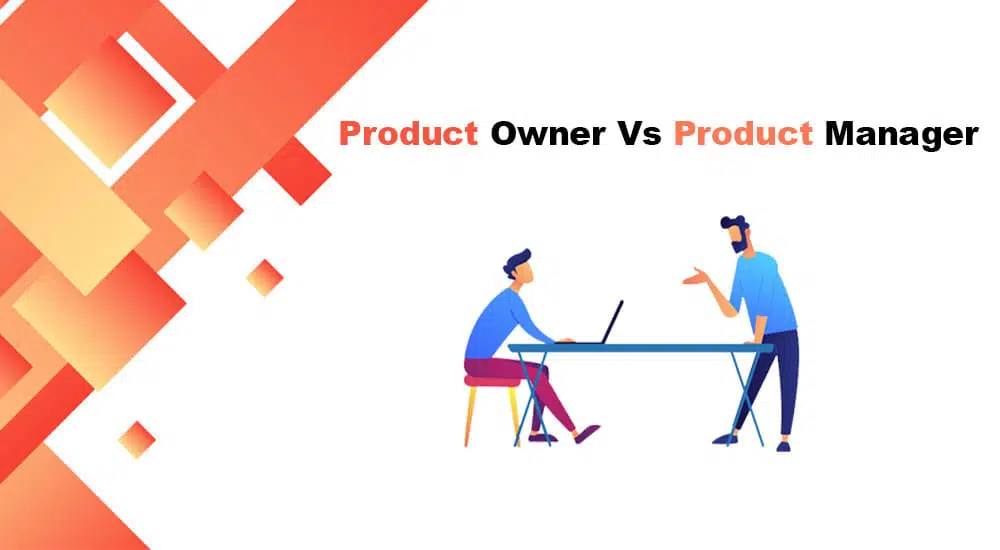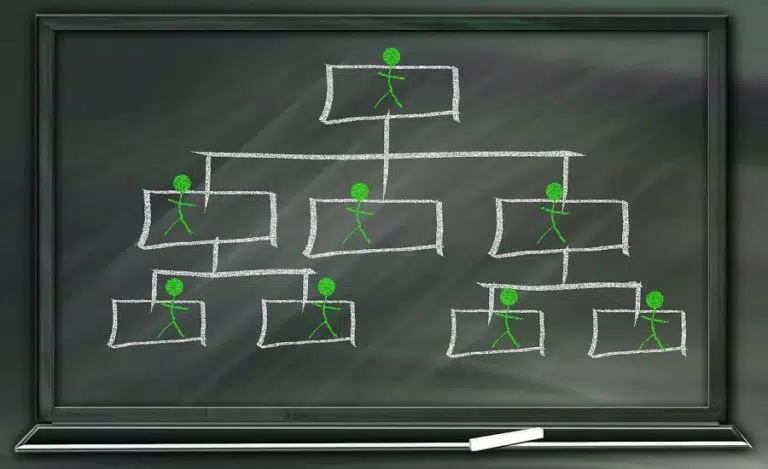Many professionals do not understand the difference between the product owner and the project manager. The product owner and product manager are distinct roles, and in today’s blog post, we will learn the roles of both positions and discuss the product owner vs product manager.
A product is a service or system that businesses develop to meet users’ requirements. However, consumers are cautious and demanding, and fulfilling their requirements is difficult.
Over time, products evolve with increasing complexity, and managing the dynamic requirements entails specialization and better management in the product life cycle.
Organizations need someone to define their high-level vision of the service and maximize the product value. Thus, they need a product owner and product manager.
Product Owner Vs Product Manager
Product owners’ responsibilities are often confused with product managers’ responsibilities, as they sometimes share common tasks. However, the product manager has a wider role, and the product owner is mostly a subset of the product manager.
In many organizations, the roles and responsibilities of product owners and product managers are often interchanged, depending on the nature of the product development team and the company’s size.
The product owner focuses on maximizing the product value. The product manager’s focus is balancing the user experience, building a feasible product, solving customers’ problems, and fulfilling the organization’s business needs.
So, a product manager has more responsibilities than a product owner.
Let’s discuss the product owner vs. product manager in detail.
Product Owner
Many professionals assume product owners are service owners because the names are similar, but this is wrong.
The role of the service owner is limited to the quality of their service. They adopt a portfolio view and manage end-to-end services of the products.
The product owner is concerned with getting customer satisfaction by delivering quality work through proper guidance to the team towards achieving the customers’ needs.
Here, we are talking about a scrum team developing the product with client collaboration through the product owner. The product manager creates daily tasks for team members and evaluates the deliverable based on customer needs.
The role of the product owner includes:
- Efficient product backlog management.
- Identifying customers’ needs and guiding the team to achieve them.
- Analyzing product risk.
- Defining product requirements and communicating the goals and requirements to the team.
- Developing and sharing product backlog items with the team.
- Prioritizing product backlog items.
- Ensuring backlog item transparency and clarity.
- Ensures the previous feed is factored into the deliverable before moving further.
- Communicates internally with the team and externally with the customers.
The product owner works with the stakeholders to get the correct requirements. They help improve relationships, build customer trust, and help the delivery/development team understand the vision and needs. Hence, this role is comparable to a bridge between the two sides that allows smooth communication.
The product owner manages the manager of the Agile team. However, if the product development is not following Agile methodologies, the product owner’s role will probably not be required.
A product manager can serve as the product owner in small organizations but cannot always be accessible if they manage a handful of large, complex products, each with a dedicated team of developers.
Other agile frameworks do not involve frequent requirement modification, so product managers can easily fulfill the role of the product owner.
The following table compares the responsibilities of product manager vs the product owner.
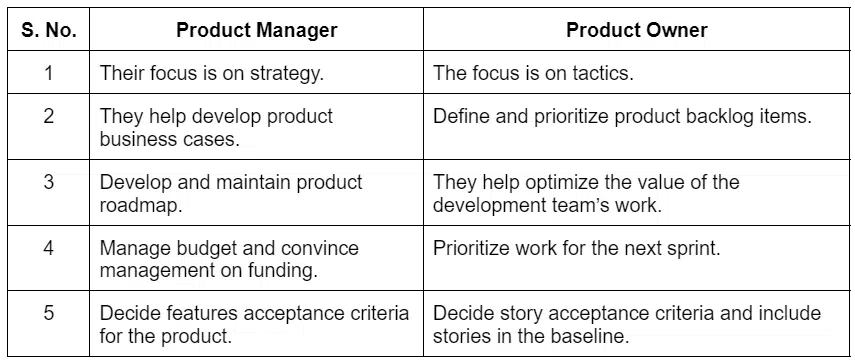
Habits of Highly Successful Product Owners
Product owners are responsible for maximizing the product value. They focus on two aspects of the product: building the “right thing” and building the thing “right.”
They categorize the seven habits of successful product owners according to those two aspects.
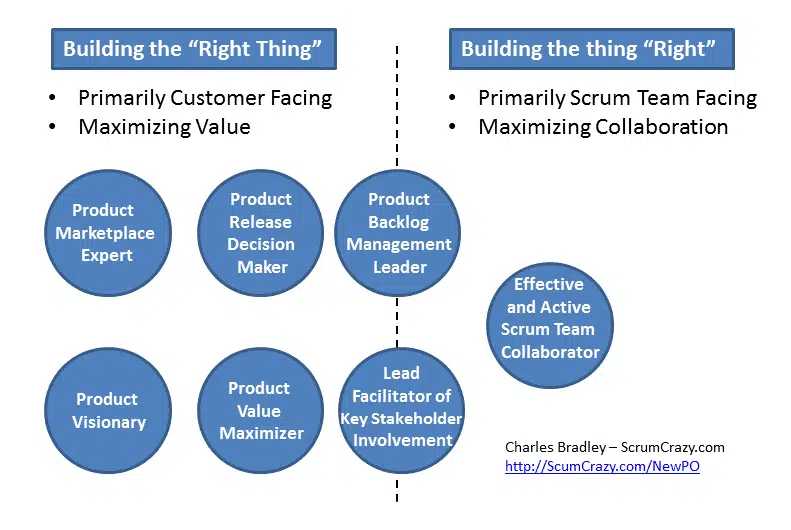
Product owners communicate on both sides (customer facing and team facing).
With the team, they discuss backlog items and develop the deliverable. With customers, they collect the feedback and explain it to the team members so they can solve the customers’ problems.
Building the “Right Thing”
The product owner understands the customers’ needs and adds value to the product.
Successful habits that the product owner exercises to build the “Right Thing” include:
- Product Value Maximizer: Works to maximize the product’s value.
- Product Visionary: Communicates with the customer to understand their needs and clarify them to the team to fulfill customer requirements.
- Product Backlog Management Leader: Translates the high-level vision of the product into manageable and executable backlog items.
- Product Marketplace Expert: Understands the product’s features to launch into the market.
- Product Release Decision Maker: Knows the customers’ needs and the product; they decide the right time to release the product in agreement with the client.
- Lead Facilitator of Key Stakeholder Involvement: Leads and represents the development team when communicating with the key stakeholders.
Building the Thing “Right”
Using the right strategies, product managers can build the product correctly. The following habit helps them build the thing “right.”
- Product Backlog Management Leader.
- Lead Facilitator of Key Stakeholder Involvement.
- Effective and Active Scrum Team Collaborator.
Product Manager
The product manager has more responsibilities as compared to the product owner. Their responsibilities include defining high-level visions and missions, while the product owner’s concern is translating high-level missions into day-to-day activities.
Other responsibilities of product managers are:
- Defining high-level problems and product success.
- Recognizing market needs.
- Achieving defined objectives that prioritize product features.
- Ensuring the company generates profit.
- Guiding and leading different teams within the organization, focusing on the product, including the product owner.
- Managing the entire product lifecycle and roadmaps and setting the strategic direction of the product.
- Translating the product strategy into planned work.
- Trading off to ensure the delivered product is right.
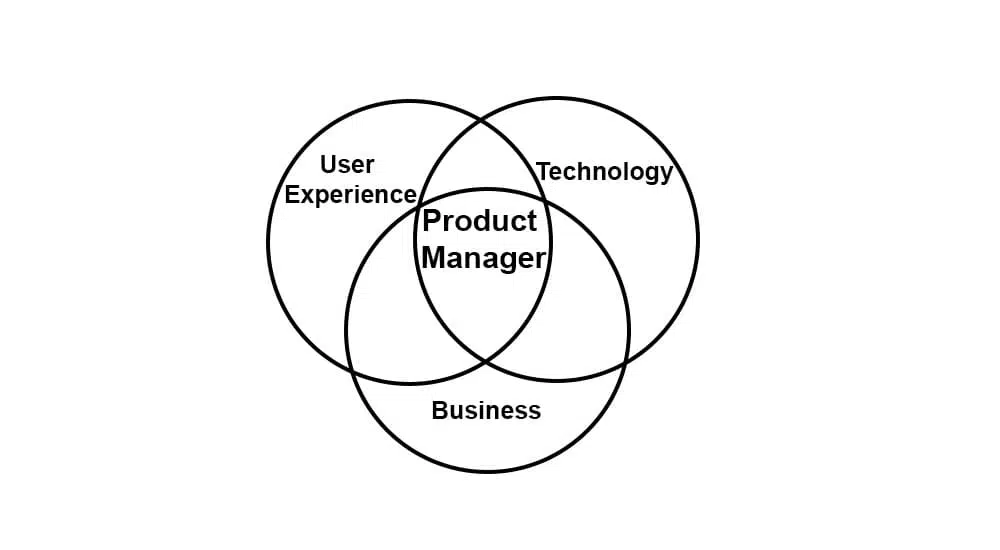
The above figure shows product managers’ responsibilities distributed among three disciplines: User Experience (UX), Technology, and Business.
Product managers must be experienced, have the required skills in the disciplines mentioned above, and balance them using tough decisions and trade-offs.
Product managers balance the need for user experience, ensure the product is feasible, and solve customers’ problems.
Salaries of Product Owner and Product Manager
Product owners are responsible for maximizing the product’s value; their role is often a subset of the product manager’s role. However, product managers are responsible for the entire product’s lifecycle, and their domain is broader than the product owner.
The average salaries of these roles are often not the same for the following reasons:
- Product managers with less experience will have the same salary as the product owner.
- Smaller companies might hire a person responsible for the product. Since there are fewer responsibilities, they do not hire product managers and entrust the responsibilities to the product owner. This drives the salary of product managers downward.
- Large companies must share product responsibilities between different parties for increased quality and better management. So, the need for product owners in larger enterprises drives their salaries upward.
As of June 2021, Glassdoor.com reported the average salary for a product owner is 100,000 USD with a range of 70,000 – 142,000 USD in the United States. The salary of a product manager is 112,000 USD, with a range of 73,000 – 173,000 USD.
Product managers have higher salaries.
Do Organizations Need Both Roles?
Organizations consider many factors in deciding whether they need both positions or one of them.
These factors are given below.
#1. Organization Size
Large organizations have more responsibilities with different teams to deal with different aspects of products. In this case, it will be hard for one person to deal with both roles.
Smaller organizations have fewer responsibilities, so they can have a product owner with some additional responsibilities or a product manager.
#2. Framework
The Agile framework facilitates collaboration and teamwork by dividing the tasks among the team members. The organization must assign a product owner if it follows the Agile framework.
Projects following waterfall methodologies do not require product owners. Here, product requirements are defined at the beginning of the project and delivered to the project management team at once.
Here requirements are fixed, and at the end, they verify the product to ensure it meets the stated requirements.
When using other frameworks for product development, a product manager can deal with the product lifecycle and the task of the product owner. In other frameworks, product owners have little or no role.
Summary
The responsibilities of product managers and product owners might be confusing since they have a few common tasks and sometimes work interchangeably. The product manager is involved in various domains and has more responsibilities than product owners. Product owners are assumed to be subordinate to product managers.

I am Mohammad Fahad Usmani, B.E. PMP, PMI-RMP. I have been blogging on project management topics since 2011. To date, thousands of professionals have passed the PMP exam using my resources.

